14-3. Julius Caesar
had
changed the
old calendar and anciently there were only
29 days to be counted with in DECEMBER and JANUARY:
|
Martius |
31 |
31 |
31 |
- |
|
Aprilis |
29 |
60 |
30 |
+1 |
|
Maius |
31 |
91 |
31 |
- |
|
Iunius |
29 |
120 |
30 |
+1 |
|
Quintilis |
31 |
151 |
31 |
- |
|
Sextilis |
29 |
29 |
31 |
+2 |
|
Sum |
180 |
184 |
+4 |
|
Sept |
29 |
30 |
+1 |
|
Oct |
31 |
31 |
- |
|
Sum |
60 |
61 |
+1 |
|
Total |
240 |
245 |
+5 |
|
Nov |
29 |
30 |
+1 |
|
Dec |
29 |
31 |
+2 |
|
Ianuarius |
29 |
31 |
+2 |
|
Februarius |
28 |
28 |
- |
|
Sum |
115 |
120 |
+5 |
|
Total |
355 |
365 |
+10 |
He had added 10 regular days.
 |
 |
 |
 |
 |
 |
|
Eb4-32 (465) |
Eb4-33 |
Eb4-34 |
Eb4-35 |
Eb4-36 |
Eb4-37 (12 * 12) |
|
manu hiri ki te ariki |
e ariki |
manu rere |
tapamea |
ka hokohuki - ma tere o te kahi |
te matakao - e ua |
|
Hiri 1. To braid, plait,
tress (hair, threads). 2. To rise in
coils (of smoke). 3. To hover (of
birds). Vanaga. 1. To elevate, to
mount. Hiriga, to elevate;
elevation, mounted, ascension,
assumption, declivity; hiriga
mouga, hillside. Hirihiri,
a swing, seesaw. P. Pau.: iri,
to be put up in a place, to lodge.
Mgv.: iri, placed in a higher
position than the observer, as a box
on a high shelf. Ta.: iri, to
lodge or stick up in a place. The
germ signification is 'above,
higher'. In Samoa it is used most
commonly in a tropical sense, but
the primal sense is sufficiently
retained in the signification to
lodge, to stick in, to show general
concord with Rapanui and particular
harmony with the other languages of
Southeast Polynesia. 2. To make a
bag; taura hiri, to make a
cord; rauoho hiri, plaited
hair; hirihiri, frizzed;
rauoho hirihiri, lock of hair. P
Mgv.: hiri, wo weave, to
plait; akahiri, to make a
mat. Mq.: hii, large plait of
coconut fiber. Ta.: firi, to
plait, to braid. When we interpret
in the sense of local conditions
Père Roussel's definition 'to make a
bag' the concord is perfect, for
bags are woven. The germ sense is
plainly the act of twining in and
out, over and under, which, with
specific differences due to manner
and material, may result in plaiting
or weaving; see hiro. 3. To go, to
walk, to voyage, to arrive, to
appear; hiri tê reka, to go
without noise; hiri koroiti,
to go softly; hiri tahaga no mai,
to go without a halt. Hiriga,
voyage, journey; hiriga hakapa,
to go by twos; hiriga hipa,
to go obliquely; hiriga kokekoke,
to go by sudden steps; hiriga
okorua, to go by twos; hiriga
tahataha to go across; hiriga
tekiteki, to go on hopping;
hiriga tê mataku, to go on
fearlessly; hiriga totoro, to
go on all fours; hiriga varikapau;
to go in a ring; hiriga veveveve,
to go boldly. Churchill. Pau.:
Hirinaki. 1. To incline, to
slope. Ta.: hirinai, to rest
upon. Ma.: irinaki, to rest
upon. 2. To be apprehensive. Ta.:
hirinai, to apprehend.
Churchill. Mgv.: Aka-hiria,
to enquire after. Sa.: sili,
to ask, to demand. Hirihiri,
to fish for turtle. Mq.: fiifiii,
a small net for taking turtle.
Churchill.
Ki. To,
towards (a place, a person); after
(time); for, in order to... Vanaga.
Kî. To say, to speak; word,
language; will, wish (verbally
expressed): e-hakarogo koe ki te
kî o toou matu'a, obey you
father's will. Vanaga. 1. In,
toward, to, for, at; ki ra,
there; ki ra hoki, exactly
there; ki aho, outside; ki
roto, within, into, inside,
among. 2. In order that. 3. To say,
to speak, to chat, to pronounce, to
respond; argument, conversation,
description, doctrine, expression,
word, relation; ki veveveve,
voluble; ki vaiapuga,
nonsense, to speak much and say
nothing; ki ihoiho, to speak
forcefully. Churchill.
Matakao. Oar,
paddle; clitoris. Churchill. |
|
VISIBLE CLOSE TO
THE FULL MOON: |
|
ALGIEBA (The Mane) = γ
Leonis,
q Carinae (155.5) |
TANIA AUSTRALIS (Southern Gazelle) =
μ
Ursae Majoris (156.0), GHOST OF
JUPITER = NGC3242 Hydrae
(156.8) |
Extended Net-26b (Ox)
μ
Hydrae
(157.1) |
Maru-sha-arkat-Sharru-15 (4th Son
behind the King)
SHIR (Possessing Luminous Rays) =
ρ
Leonis
(158.9) |
p Carinae (159.3) |
φ Hydrae (160.3) |
|
SOLSTICE |
22 |
23 |
JUNE 24 (175) |
25 |
26 |
|
Aug 24 (236) |
25 |
26 |
27 (175 + 64) |
28 |
29 |
 |
 |
|
Eb4-38 |
Eb4-39 |
|
erua age rae |
|
No star listed
(161 →
φ) |
VATHORZ POSTERIOR = θ Carinae
(162.1),
PEREGRINI = μ Velorum,
η Carinae
(162.6) |
|
Aug 30 |
31 |
 |
 |
 |
 |
 |
 |
|
Eb4-40 |
Eb4-41 |
Eb4-42 |
Eb5-1 (326 + 150) |
Eb5-2 (477) |
Eb5-3 (152) |
|
manu i ruga o te take |
manu rere |
E manu |
i te tino |
ku tere mai |
henua - kiore |
|
Take.
The Marquesans are the
only people who own to a distinctive
national name, and retain a
tradition of the road they travelled
from their original habitat, until
they arrived at the Marquesan
Islands. They call themselves te
Take, 'the Take nation'.
Fornander. Take, Tuvaluan for
the Black Noddy (Anous Minutes).
The specific epithet taketake
is Māori for long established,
ancient, or original. In the Rapa
Nui mythology, the deity
Make-make was the chief god of
the birdman cult, the other three
gods associated with it being
Hawa-tuu-take-take (the Chief of
the eggs) his wife Vie Hoa
and Vie Kanatea. Wikipedia. |
|
ν Hydrae (163.1) |
No star listed (164)
ALTAIR (α
Aquilae) |
Wings-27 (Snake)
η
Octans (165.4),
ALKES (Shallow Basin) =
α
Crateris
(165.6)
*124.0 = *165.4 - *41.4 |
ANA-TIPU-4
(Upper-side-pillar - where the
guards stood)
MERAK (Loin, not Lion) =
β
Ursae Majoris
(166.2),
DUBHE (Bear) =
α
Ursae Majoris
(166.7) |
11h (167.4)
χ
Leonis,
χ¹
Hydrae (167.1),
χ²
Hydrae (167.3)
*167.4 - *41.4 = *126.0 |
AL SHARAS (The Ribs) = β Crateris
(168.6) |
 |
|
JUNE 28 |
29
(244 - 64 = 180) |
SIRIUS |
JULY 1 |
2 |
3
(184) |
|
Aug 31 |
Sept 1 |
2 |
3
(2 * 123) |
4 (183 + 64) |
5
(248) |
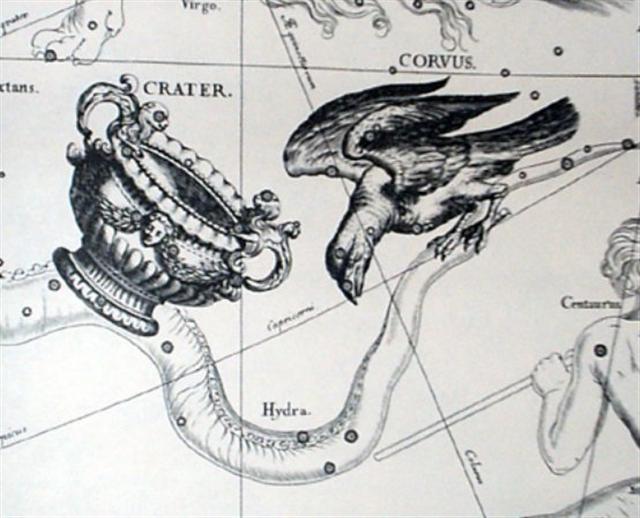 |
|
THE SUN: |
|
DEC 28 |
29 (363) |
- |
JAN 1 (65 - 64) |
2 |
|
March 2 (61) |
3
(31 + 28 + 3) |
4 (428 - 365 = 63) |
5
(246 + 183 = 429) |
6
(365 + 65) |
7
(80 + 351 = 431) |
|
ι Cephei (346.0),
λ Aquarii, γ Piscis Austrini, σ
Pegasi (346.5) |
SCHEAT AQUARII = δ Aquarii (347.0),
ρ
Pegasi (347.2),
δ
Piscis Austrini (347.4),
FOMALHAUT (Mouth of the Fish) =
α
Piscis Austrini,
τ
Gruis (347.8)
*306.0 = *347.4 - *41.4 |
FUM AL SAMAKAH (Mouth of the Fish)
=
β
Piscium
(348.3),
ζ
Gruis (348.5),
ο
Andromedae (348.9) |
Al Fargh al Mukdim-24 (Fore Spout)
/
Purva Bhādrapadā-26 (First of the
Blessed Feet)
/
House-13 (Pig)
SCHEAT PEGASI =
β
Pegasi,
π
Piscis Austrini (349.3),
κ
Gruis (349.4),
MARKAB PEGASI =
α
Pegasi
(349.5)
*308.0 = *349.4 - *41.4 |
23h (350.0 = 167.4 + 182.6)
υ, θ Gruis (350.0),
π Cephei (350.6), ι Gruis (350.9) |
SIMMAH = γ Piscium
(351.7) |
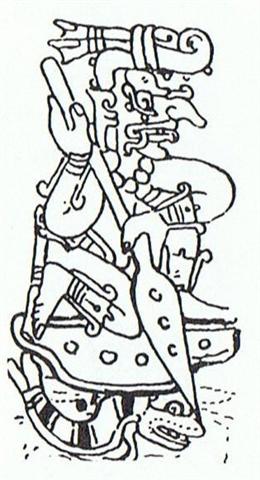 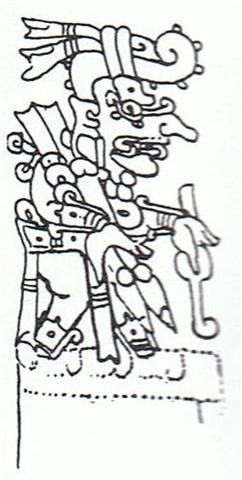  |
The 'red cloth-count' (tapa mea) with 3 + 3 = 6
'feathers' at left (looking back) in Eb4-35 had disappeared 8 nights later:
|
 |
 |
*7 |
 |
 |
|
tapa mea |
tapamea |
i te tino |
tao |
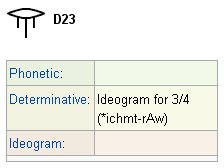 |
JUNE 23 (114) |
JULY 1 (122) |
 |
|
Aug 27 (*159) |
Loin (*166) |
|
"July 17
(*118) |
Sept 3 (246) |
|
...
On the late afternoon of the
June solstice, towards sunset, we reached Ahu
Akivi near the centre of the western side of
Easter Island. This is an inland site, 3
kilometers from the coast. Like Ahu Nau Nau
at Anakena, it has seven Moai, but
in this case none of them have topknots and,
uniquely, all face west towards the sea - which
is clearly visible from the high point on which
they stand. There is a
curious tradition concerning these grizzled,
otherworldly statues, solemn and powerful, with
their blank, aloof eye-sockets gazing out over
the limitless ocean. Like most of the other
Moai of Easter Island the local belief is
that they died, long ago, at the time when
mana - magic - supposedly fled from the
island never to return. However, in common with
only a very few of the other Moai, it is
believed that these particular statues still
have the power, twice a year, to transform
themselves into aringa ora -
literally 'living faces' - a concept startingly
similar to the ancient Egyptian notion that
statues became 'living images' (sheshep ankh)
after undergoing the
ceremony of the 'opening of the mouth and the
eyes' ...
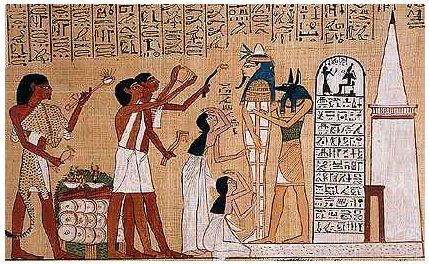 |
Tino. 1.
Belly (as reported by a Spaniard in 1770). 2. Genitalia
(modern usage). 3. Trunk (of a tree), keel (of a boat);
tino maîka, banana trunk; tino vaka, keel.
Vanaga. Body, matter; mea tino, material; tino
kore, incorporeal. P Pau.: tino, a matter, a
subject. Mgv.: tino, the body, trunk. Mq.:
tino, nino, the body. Ta.: tino, id.
Churchill.
... The Celtic year was divided into two halves with the
second half beginning in July, apparently after a
seven-day wake, or funeral feast, in the oak-king's
honour ...
And now the bare bottom of the body would be seen in all its glory.
... The fish came near the surface then, so that Maui's
line was slack for a moment, and he shouted to it not to
get tangled. But then the fish plunged down again, all
the way to the bottom. And Maui had to strain, and haul
away again. And at the height of all this excitement his
belt worked loose, and his maro fell off and he had to
kick it from his feet. He had to do the rest with
nothing on ...

. ... When this tremendous task had
been accomplished Atea took a third husband,
Fa'a-hotu, Make Fruitful. Then occurred a curious
event. Whether Atea had wearied of bringing forth
offspring we are not told, but certain it is that
Atea and her husband
Fa'a-hotu exchanged sexes. Then the [male] eyes
of Atea glanced down at those of his wife Hotu
and they begat Ru. It was this Ru who
explored the whole earth and divided it into north,
south, east, and west
...
In other words, at birth no human child will be wearing any clothing.

When the nakshatra Full Moon reached
the line between α and β Ursae Majoris it was know the
Sun would have reached the line between α and β Pegasi.
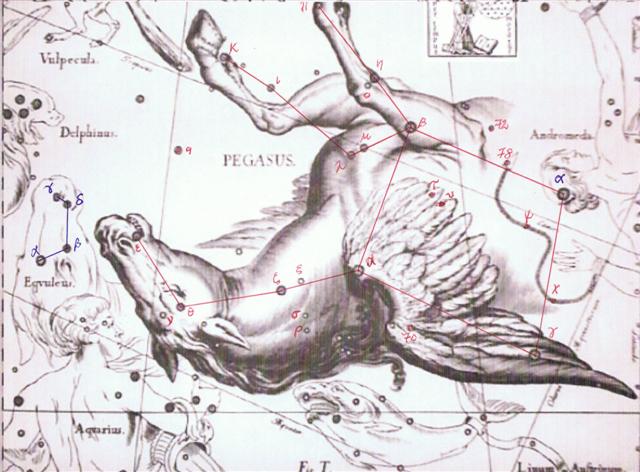
Thus the trunk (te tino)
of the cosmic tree had to be at this place:

|


















